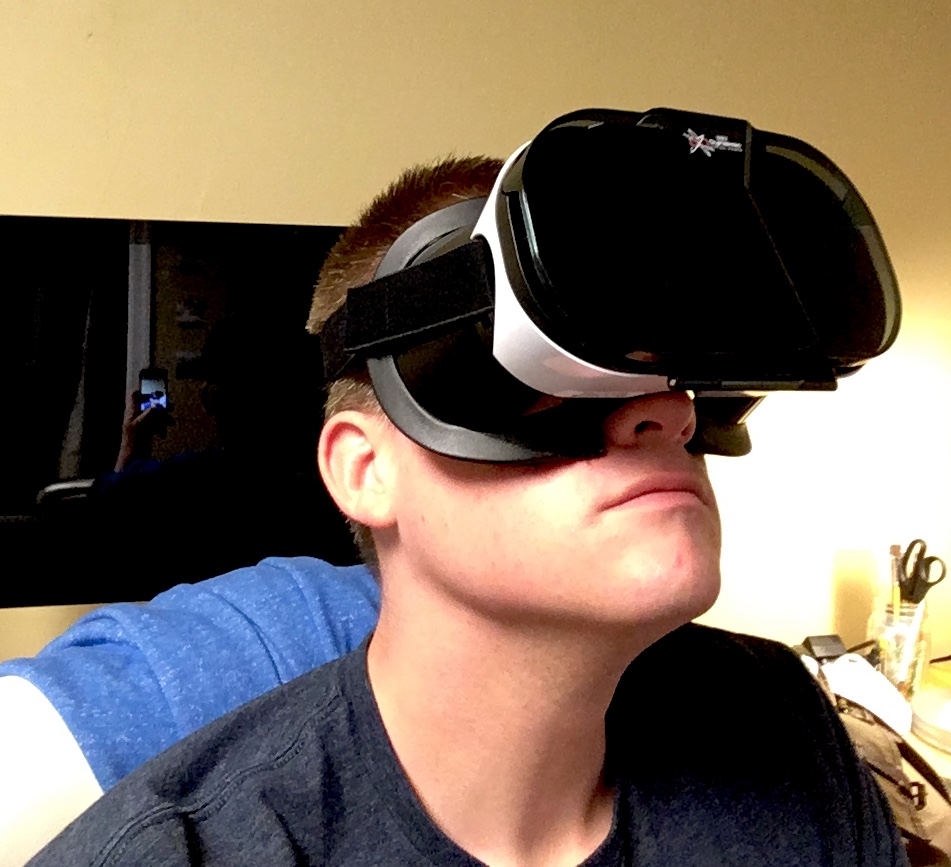
The future won’t look this stupid. I promise.
For the past several months I’ve been doing research on computer-mediated reality (CMR) – that is, when what’s real is somehow changed, interrupted, distorted, or otherwise effected by a wearable computer.
This "ability" isn’t new and it is a nuanced superset of many different types including mixed reality (MR) (which I’m most interested in currently), augmented reality (AR), virtual reality (VR), and diminished reality (VR). These subsets, in turn, include many more subsets such as transreality (TRG), simulated reality (SR), and many more.
The more I have dug into this industry the more I’ve found how incredibly far reaching it is already and how much further it has to grow. Many of the applications in current use haven’t even hit the consumer market and others are hiding in plain sight – such as Pokemon Go, Foursquare, or even Google Maps. I’m willing to bet if you line 10 people up on the street and ask them if they use AR on a daily basis they’d say they didn’t think so. But if you inspect further I’m willing to bet they are and don’t even know it.
Here are some rather random observations I’ve made. Note that I’m mostly using the word "application" to mean how the technology is applied to a problem or situation rather than the typical use today as an "app" on your phone.
- The common refrain today is VR vs. AR but upon inspection the industry is far, far more nuanced than that
- MR is a hybrid of reality and VR which, to me, seems to have the largest number of applications for both businesses and consumers that has me interested the most
- Pure VR applications will big a huge, huge market (esp in entertainment or recreational uses) but, to me, doesn’t have the broader applications that MR does
- The industry supports a huge array of hardware and software to create the products that we see today and will see in the future. This means huge amounts of jobs. Think: Caves, HUDs (such as your bathroom mirror, your refrigerator, your car’s windshield), head-mounted displays (such as glasses, goggles, phone holders, etc), tablets, phones, computers and hardware we haven’t even seen yet.
- The way information is displayed is going to dramatically change within MR applications. How should a Wikipedia page on the honey bee be shown to a child wearing MR glasses while they are touring an apiary? Certainly this new wave of information layout should not be constrained to the resizable "windows" that we see in current demos but that we will see a rich set of layout and display tools that will make mundane information that the web currently hosts to come alive.
- The pushback that Google Glass saw due to the possible "creepy" ways in which the technology could be used will disappear very quickly. Yes, I could have glasses on that could search for your LinkedIn profile while I’m looking at you. But, I could have done that later with an image on my phone too.
- Speaking of which, facial recognition (and other machine learning algorithms that can find patterns and objects) are going to play an enormous role in the MR space. Expect many acquisitions in this space in the next 24 months.
- As with any new platform the only way it will ever reach critical mass is if the applications (meaning, the apps, integrations, services that are supported) are plentiful. iOS’s biggest tentpole is the App Store. Mixed Reality applications for any platform (such as Hololens) need to be myriad before a business or consumer can truly invest in the platform. Microsoft claims, just one year in, that they have 150 apps. Depending on how they count the internal apps that companies like Japan Airlines have built exclusively for themselves, this could be an excellent day one offering.
- MR could kill the computer display industry for businesses. (Though, this will take a very long time.)
- Untethered devices, such as Hololens, will need to be affordable and have great battery life before the consumer market explodes. Likely something that will happen in 2018 or 2019.
- Tethered devices, such as Oculus (though, this is VR not MR), will be valuable in gaming and enterprise contexts because it can rely on much more computing power coming from the connected hardware.
- Think of tethered as "Pro" and untethered as "consumer" or "lite" for the most part.
- The same way that tablet and mobile computers have revolutionized mobile computing (think: professionals on-the-go like visiting nurses, gas pipeline inspectors) and information transfer (think: pilots that used to have 100 books in the cockpit and now just have an iPad), MR will revolutionize contextual search and on-the-job training.
- One of the complaints of MR is that you need to have a controller or move your hands all over the place to interact with the objects in your view. However, if you combine MR with what Elon Musk’s Neuralink (more here) will be making we’ll leapfrog how Tom Cruise used MR in Minority Report and move swiftly into the incredible territory of controlling virtual objects with our minds. Too future thinking? We’ll see.
This isn’t all that I’ve learned but are just some of the things I’m currently thinking about in this space. I’ll try to collect more tidbits under the CMR tag here on my blog.
I’m looking forward to following this industry as it matures and also supporting some at Condron Media. If you’re working on anything in this space please reach out to me.